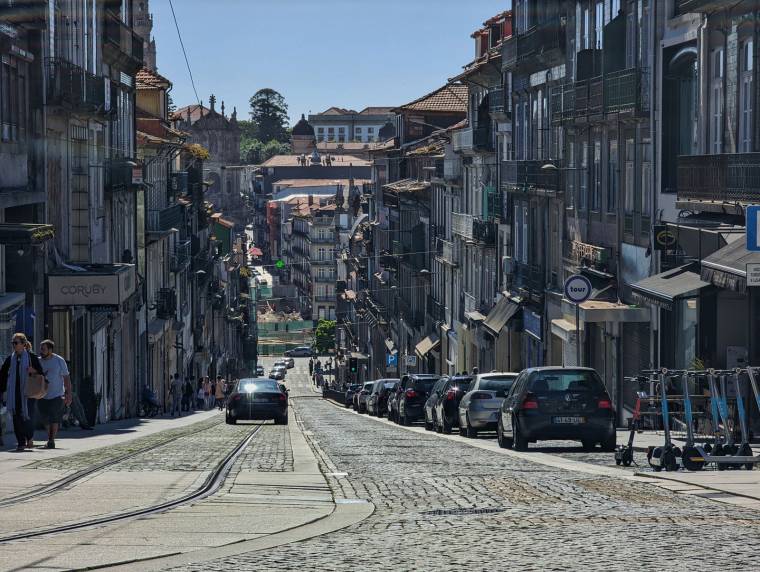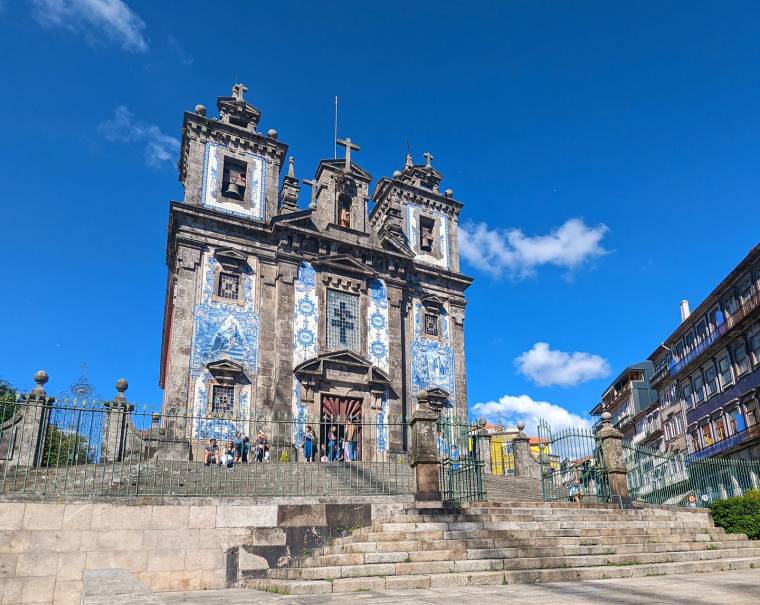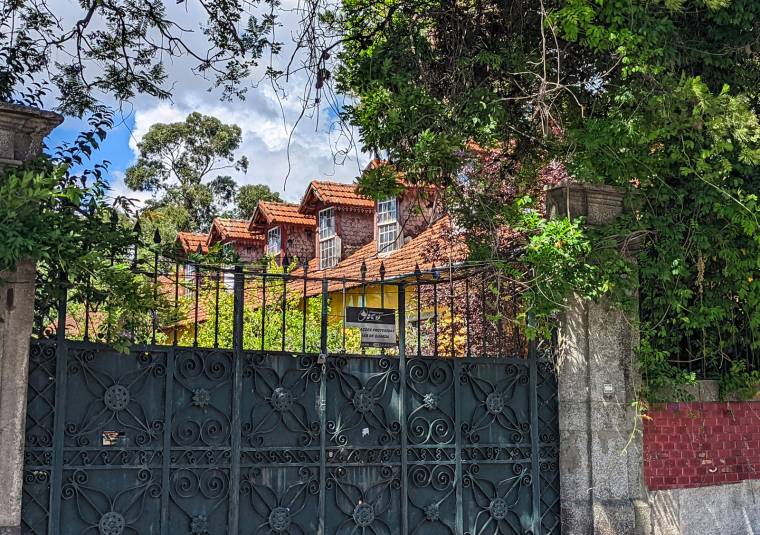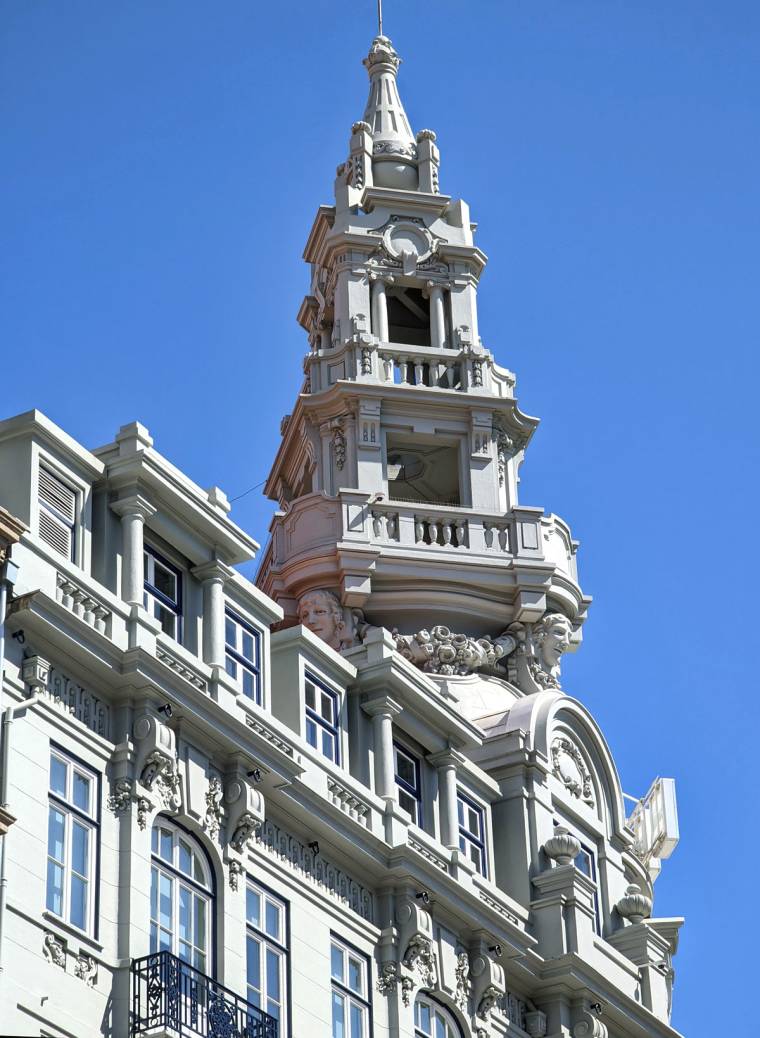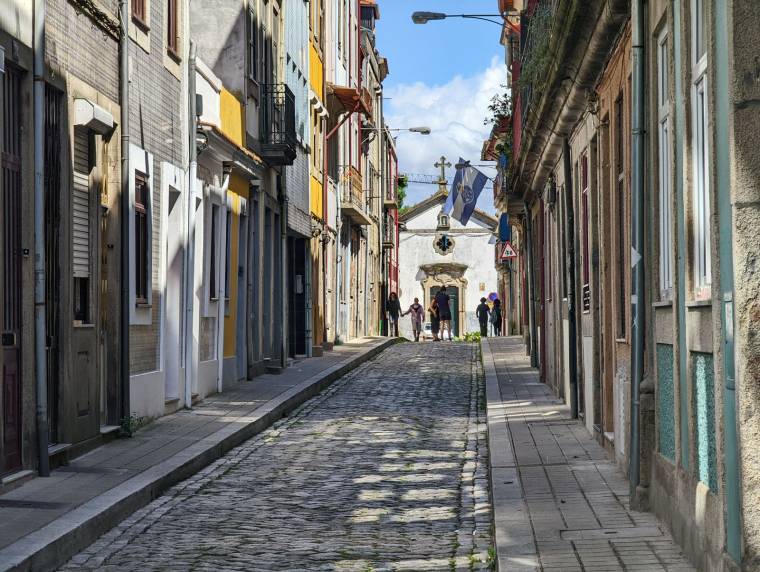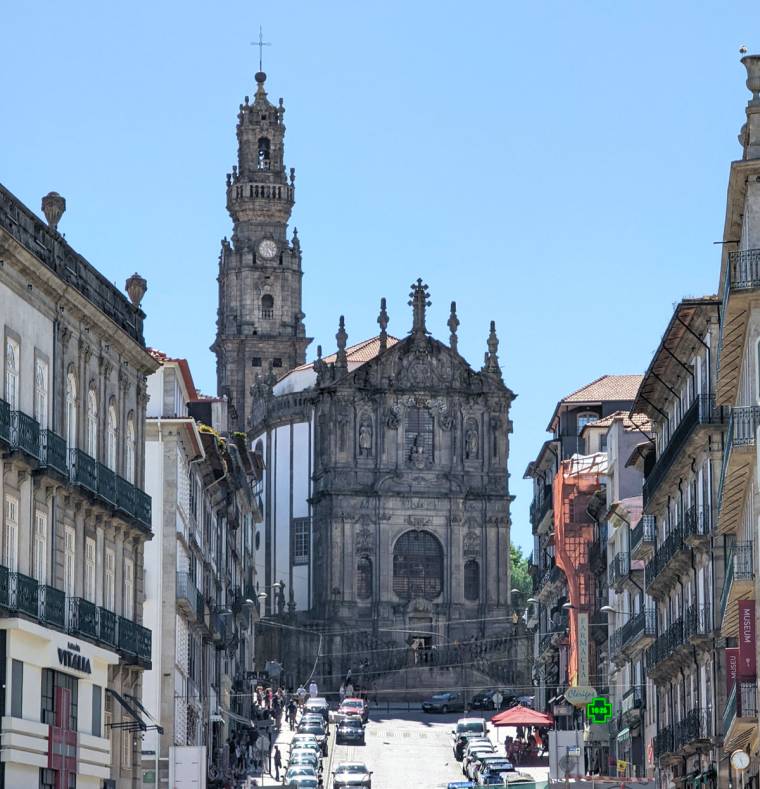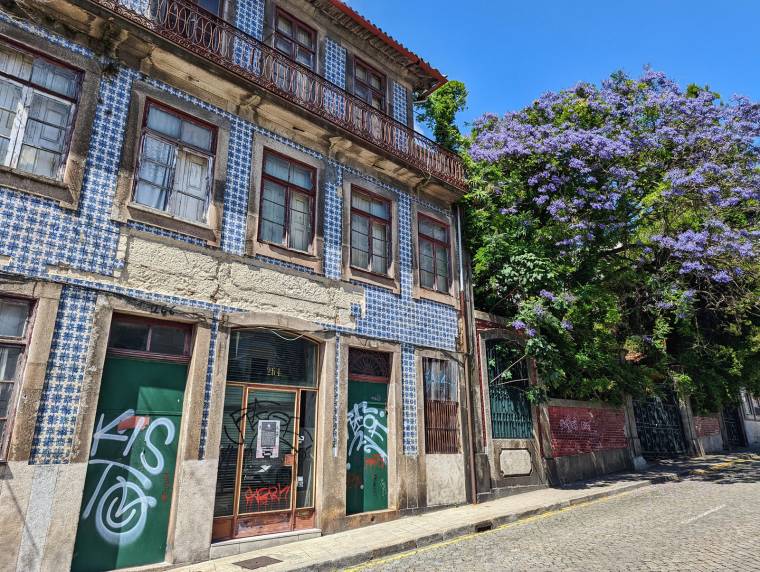Situated on Rua Sá da Bandeira, at the bottom of Avenida dos Aliados is this interesting church. Igreja de Santo António dos Congregados.Dating back to 1703 it was built on the site of a smaller 17th century chapel. Besides its attractive facade, the church's main claim to fame is that it is said to house part of the body of Pope Saint Clement I who was martyred in the 1st century.
Related images
Built in 1798, the original Teatro de São João was destroyed by fire in 1908. A competition to find an architect to design a new building was won by José Marques da Silva. He was once described as "Porto’s last classical and first modern architect" and the Teatro Nacional São João building is certainly testament to that. Despite its classical appearance the theatre is actually constructed from concrete and cement. The new theatre operated as such for a further 20 years until the arrival of the silver screen. In 1932 it became more or less a cinema. The following decades were not kind to the building and it fell into some disrepair.However, the theatre's fate changed in 1992 when it was taken over by the Portuguese state. After much renovation and restoration it reopened as the Teatro Nacional São João and has returned to the stage being front and centre.
Related images
Situated between the Santo Ildefonso church and Sao Bento train station in downtown Porto is Rua de 31 de Janeiro. Once one of Porto's most popular shopping streets this steep cobbled road seems to have been somewhat relegated to the past. For me this is great, the quirky old shops selling things I don't know who would want to buy is part of what I love about Porto. On the flipside the street seems to be in a gradual state of decline as shops close down one by one. I'm sure they will be replaced, but it will be by something hip and touristy and the character will be lost.The name of the street comes from the uprising of January 31, 1891, which was the first step towards Portugal becoming a republic. The uprising of soldiers in Porot ended up with a shootout on the steps of Santo Ildefonso in which it was quickly put down. Many of the supporters were transported to the Colonies in Africa. However, after a republic was finally established in 1910 Rua de Santo António was renamed Rua de 31 de Janeiro in tribute to the early "martyrs".
Related images
In a city with more than a few Baroque churches Santo Ildefonso near Batalha square is one of the finest. Completed in 1739 unlike many of the Baroque masterpieces in Porto it was not designed by architect Nicolas Nasoni, however, he did design the altar.The azulejo tiles that give the church its iconic facade were actually a much more recent addition. They were only added in 1932 and are the work of .Jorge Colaço. The tiles depict the life of Saint Ildefonso and stories from the Gospels. Saint Ildefonso, to whom the church is dedicated was a 7th century bishop of Toledo.
Related images
Set on an extensive site, just off Rua dos Bragas is the Companhia Aurifícia. Founded in 1864 this was a metalworking factory making everything from gold jewellery to nails. The factory shut its doors for good in 2010 and the site was apparently sold for around 10 million euros in 2013.Ten years on not much seems to be happening. The old factory is safe from the developers as it is something of a Porto icon. The quirky exterior houses a fascinating interior with much of the old machinery still in place.
Related images
Avenida dos Aliados is Porto's grandest and most elegant avenue. Developed towards the end of the 19th century to assert Porto's status as a modern city the main square here is flanked with a mix of with art-nouveau, art-deco, Belle Époque and classical buildings. Many of these fine buildings wer, and still are, bank headquarters.This particular tower sits on the BBVA building (Edifício BBVA) which occupies one of the corners at the foot of Praca da Liberdade. Banco Bilbao Vizcaya Argentaria are one of the biggest financial institutions in the world and their national HQs tend to occupy some very fine buildings.
Related images
The view up Rua do Pinheiro in Porto. The street takes its name from the Quinta do Pinheiro which is just to the left of here, and is has the feel of a small piece of the countryside transposed to the middle of a city. It is also quite hard to imagine that Porto's grand thoroughfare, Avenida dos Aliados, is only a couple of streets away.A the end of the street is the little Capela de Nossa Senhora da Conceição da Quinta do Pinheiro.
Related images
Looking up Rua dos Clerigos towards the imposing Baroque church from which the street gets its name.One of Porto's architectural gems, the Igreja dos Clérigos was designed by acclaimed architect Nicolau Nasoni and completed in the 1760s. The most notable feature is the tower which stands at 75 metres tall and can be seen from most of Porto.
Related images
Another fine example of a dilapidated old building in Porto city centre. This one is on Rua dos Bragas in Cedofeita, opposite the university law school and next door to the Companhia Aurifica.What is interesting about this photo is the same view on Google Street View from a couple of months before shows there were no tiles missing from the front. Not sure if this means people actually steal the tiles as they don't look like they fell off by themselves.I'm guessing the rather pretty flowers next door are wisteria, but I'm probably wrong!
Related images
Classic Porto shop facades on Rua da Cedofeita. This busy shopping street is a mix of cafes, old fashioned businesses and some newer hip and trendy shops. I can't remember which category these two fall into.


